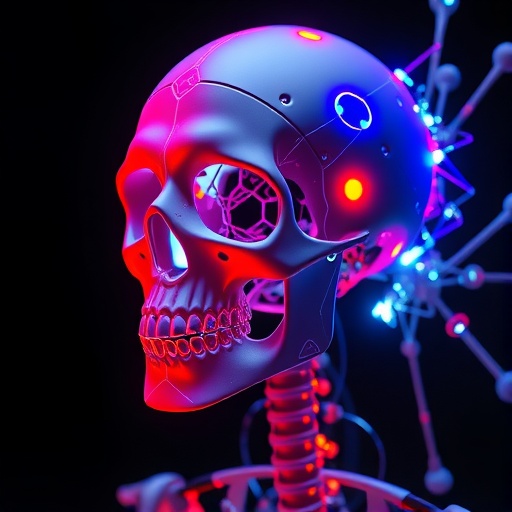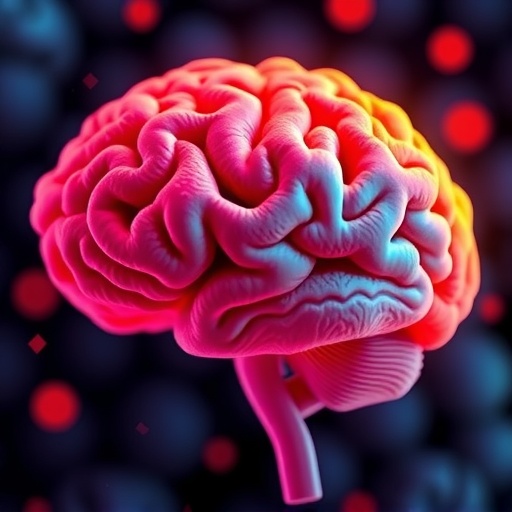In a groundbreaking advancement within the field of biomedical engineering, the recent publication by Wang, Wang, and Zuo heralds a significant leap in the applications of artificial intelligence (AI) in enhancing a vital neuroimaging technique known as skull stripping. This innovative methodology has profound implications for understanding human brain structure across various life stages, effectively pushing the boundaries of neuroimaging capabilities. By employing sophisticated AI algorithms, researchers can now achieve unprecedented accuracy in delineating brain tissue from surrounding non-brain structures, such as the skull and meninges. This feat is especially critical, as traditional methods for achieving this task have often suffered from limitations regarding efficiency and precision.
The quest for effective skull stripping has long been a challenge for neuroimaging specialists. Standard techniques often rely on manual intervention and heuristics which can be time-consuming and prone to human error. In contrast, the research team’s approach utilizes deep learning frameworks that not only automate the stripping process but also adapt to diverse anatomical variations observed throughout different age groups. Thus, this AI-based methodology represents a significant turnaround from conventional practices, offering benefits that resonate with both clinical and research settings.
The advantages of AI-driven skull stripping extend beyond mere efficiency improvements; they enhance accuracy as well. Traditional techniques frequently struggle with misclassifying skull and brain tissues, especially in atypical subjects, which can skew results in clinical assessments or scientific analyses. By employing a robust algorithm trained on extensive datasets that include individuals from various demographics, the researchers can minimize misclassification errors significantly. This reduces the chances of incorrect diagnoses based on neuroimaging data, leading to more reliable assessments in both medical and research contexts.
Moreover, the implications of the study reach into the realm of neuroscience, as accurate skull stripping can facilitate a more precise understanding of the brain’s morphology and its functional aspects. As neuroscientists strive to correlate structural features with cognitive functions, having clean, accurate imaging becomes essential. By employing this advanced AI approach, researchers can better analyze the brain’s structural integrity and how it varies across different populations and ages. This could ultimately enhance our understanding of neurodevelopmental, neurodegenerative diseases, and various psychiatric conditions that impact the brain throughout life.
A particularly interesting aspect of this research is its capacity to scale across various age groups, reflecting the dynamic nature of human brain development and aging. With a robust AI model that can adjust to the structural variances found in pediatric and geriatric populations, it becomes feasible to conduct longitudinal studies that observe neurodevelopment and age-related changes over time. Such studies are invaluable, as they contribute to our understanding of developmental milestones and the onset of neurodegenerative diseases.
Additionally, addressing ethical concerns in AI applications within the biomedical field is crucial. As the technology progresses, it is imperative that transparency and accountability are maintained throughout the implementation of AI algorithms. The researchers are particularly cautious about the ethical considerations surrounding data privacy, particularly as neuroimaging can involve extensive patient information. Establishing robust protocols that safeguard personal data whilst still allowing for the advancement of AI techniques in skull stripping is a necessary focus moving ahead.
In practical terms, the advent of AI-optimized skull stripping could have profound implications for clinical practice. Radiologists and neurologists stand to benefit greatly from streamlined workflows that enhance the quality of neuroimaging interpretations. Immediate impacts could be seen in the accuracy of surgical planning for neurosurgery, wherein detailed imaging data becomes crucial for devising effective surgical approaches tailored to individual patients. Surgeons benefit from enhanced visualization of the brain’s anatomy, promoting better outcomes in invasive procedures.
Moreover, educational institutions and research facilities can leverage these advances to refine their training programs. With improved accuracy and speed, students and novice practitioners can grasp neuroimaging principles more effectively. This knowledge transfer can empower the next generation of medical practitioners and researchers to engage with neuroimaging technologies confidently, equipping them for careers that will likely be increasingly intertwined with AI applications in the biomedical field.
The implications extend into areas as diverse as neuropsychological assessments and the development of therapeutic interventions. For instance, in psychiatric evaluations, precise brain imaging can provide insights into the underlying structural changes associated with certain disorders. The nuanced understanding gathered from accurate skull stripping could inform treatment plans and foster personalized medicine, which is rapidly becoming the goal in modern healthcare.
Furthermore, the study opens avenues for collaboration across disciplines. As artificial intelligence becomes vital within the biomedical domain, interdisciplinary cooperation between computer scientists, radiologists, and neuroscientists will be crucial. This cohesive effort fosters an environment ripe for innovation, where advancements in one field can seamlessly translate to benefits in another, ultimately leading to better healthcare outcomes for individuals.
The research team’s commitment to continual improvement of their AI algorithms ensures that as imaging technology evolves, so too will the efficacy of skull stripping methodologies. Future iterations of their work may incorporate real-time AI analysis, enabling instant feedback during imaging procedures, thus further enhancing clinical workflows and diagnostic speeds.
Wang, Wang, and Zuo’s study reinforces the notion that we are at the precipice of a new era in neuroimaging, one powered by artificial intelligence. The integration of these advanced methodologies not only has the potential to redefine current practices but will undoubtedly pave the way for future innovations that leverage AI in new, exciting ways. As researchers continue to peel back the layers of the human brain, the imperative for precision in imaging has never been greater, and this study stands at the forefront of making those strides possible.
In summary, the research highlights the transformative potential of artificial intelligence in skull stripping, underscoring its ability to advance neuroimaging practices across the lifespan. Through AI, researchers can glean greater insights into brain structure and function, forging pathways toward improved clinical diagnoses and holistic understandings of neurological health. With continuous innovations on the horizon, the pursuit of knowledge surrounding the human brain will undoubtedly accelerate, driven by the capabilities that AI now affords.
Subject of Research: Artificial intelligence in skull stripping techniques for neuroimaging.
Article Title: Artificial intelligence advances skull stripping across lifespan.
Article References: Wang, P., Wang, YS. & Zuo, XN. Artificial intelligence advances skull stripping across lifespan. Nat. Biomed. Eng 9, 1180–1181 (2025). https://doi.org/10.1038/s41551-025-01458-w
Image Credits: AI Generated
DOI: 10.1038/s41551-025-01458-w
Keywords: AI, skull stripping, neuroimaging, biomedical engineering, brain structure, deep learning, clinical practice, ethical considerations, interdisciplinary collaboration, precision medicine.
Tags: age-related anatomical variationsAI in neuroimagingartificial intelligence applicationsautomated skull stripping methodsbiomedical engineering advancementsbrain tissue delineationclinical applications of AIdeep learning in medical imagingenhancing neuroimaging capabilitiesneuroimaging accuracy improvementsresearch implications of AIskull stripping techniques





